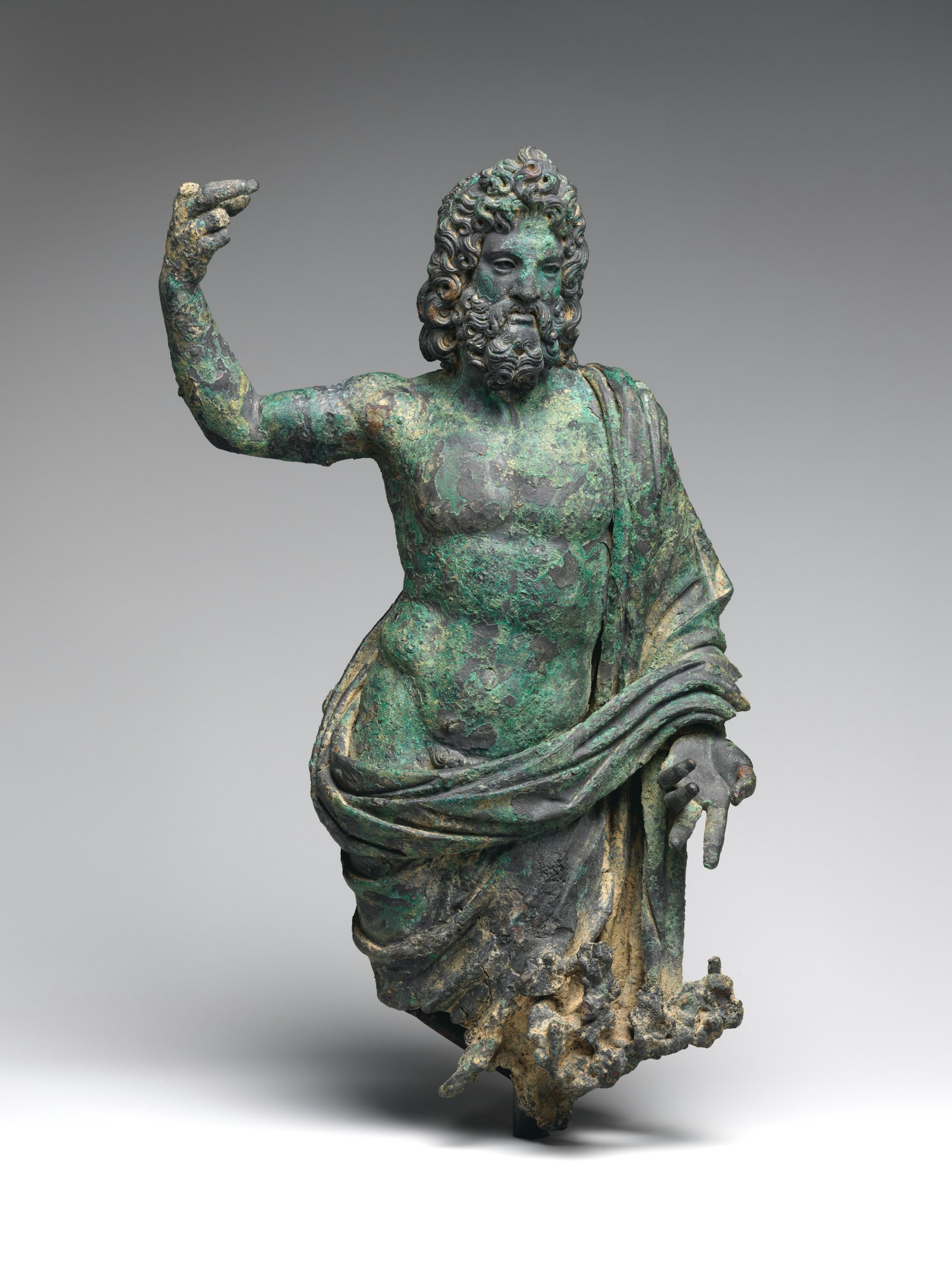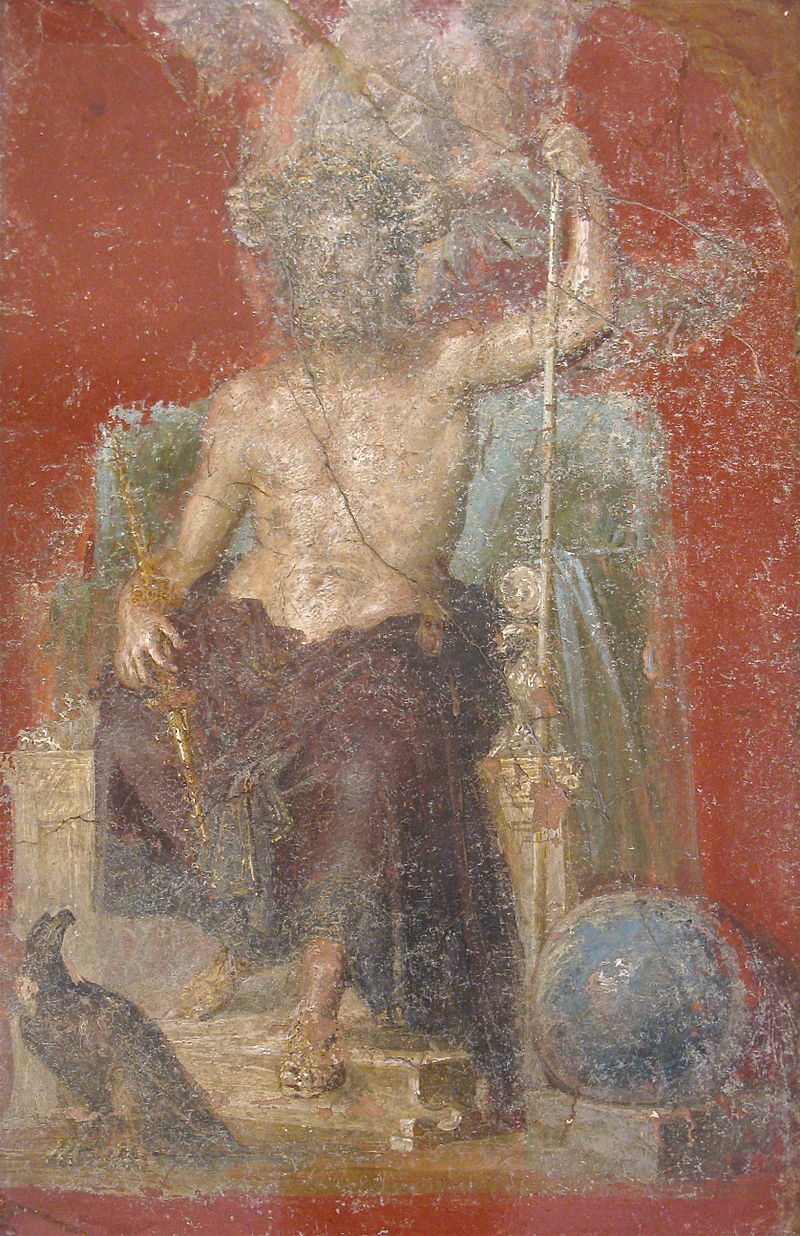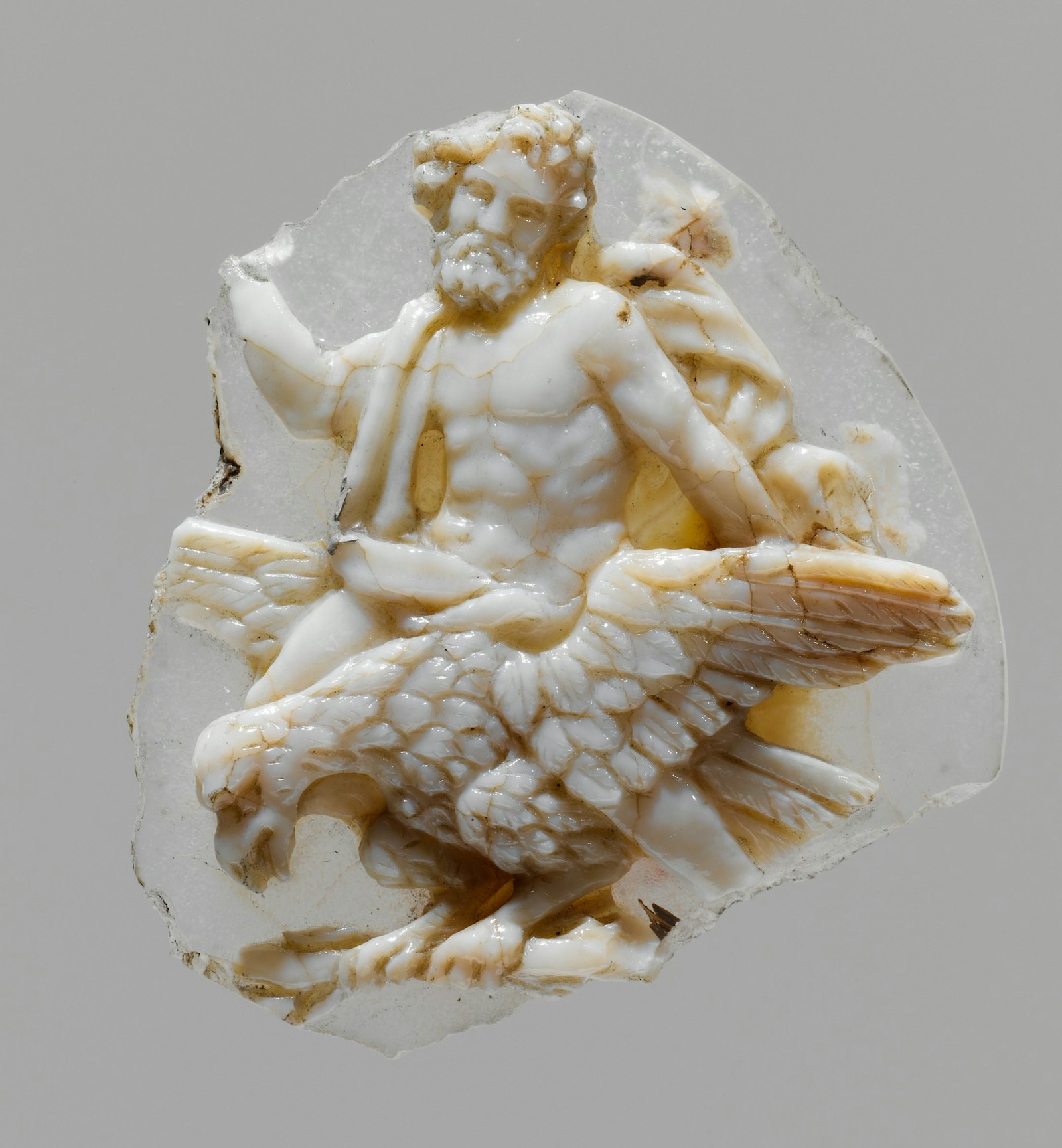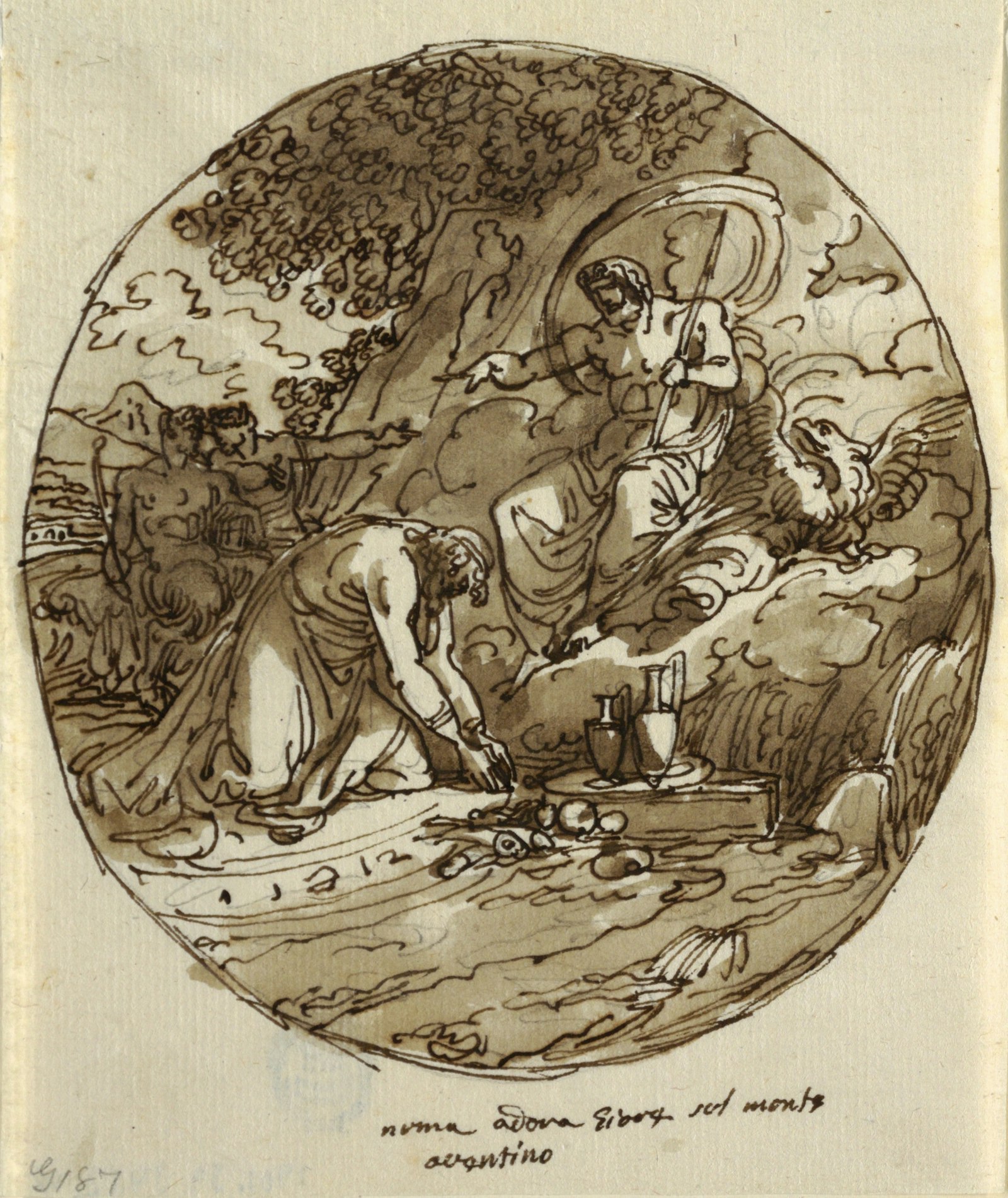





Presented here as a bearded, fully mature male, Jupiter sits holding a scepter and staff and wearing the purple toga of royalty. The foreground of the fresco features an eagle, Jupiter's chief symbol, and a globe, symbolizing his dominion over the world. Museo Archeologico Nazionale di Napoli, Naples, Italy.
WIKIPEDIA / PUBLIC DOMAIN


This fragment of a cameo, created between the first century BCE and first century CE, depicts Jupiter riding an eagle. Following the death of a Roman emperor, an eagle would be released to symbolically carry his spirit to the heavens.
THE METROPOLITAN MUSEUM OF ART / PUBLIC DOMAIN










Numa Pompilius worships Jupiter at Aventine Hill in this drawing for a ceiling fresco painted in the late 17th century. Palazzo Milzetti, Faenza, Italy.
COOPER HEWITT, SMITHSONIAN DESIGN MUSEUM / PUBLIC DOMAIN

Bas-relief from the Arch of Marcus Aurelius, late second century CE. The background of the work provides one of the few surviving depictions of the Temple of Jupiter Optimus Maximus, while the foreground depicts Marcus Aurelius and his family offering animal sacrifices to Jupiter. Capitoline Museum, Rome, Italy.
MATTHIAS KABEL / CC BY-SA 3.0


The Triumph of Aemilius Paulus (1789) by French painter Carle Vernet. The tableau depicts a procession celebrating the victory of the Roman general over Macedon in 168 BCE. The Temple of Jupiter Optimus Maximus is featured prominently in the background (left of center).
THE METROPOLITAN MUSEUM OF ART / PUBLIC DOMAIN
